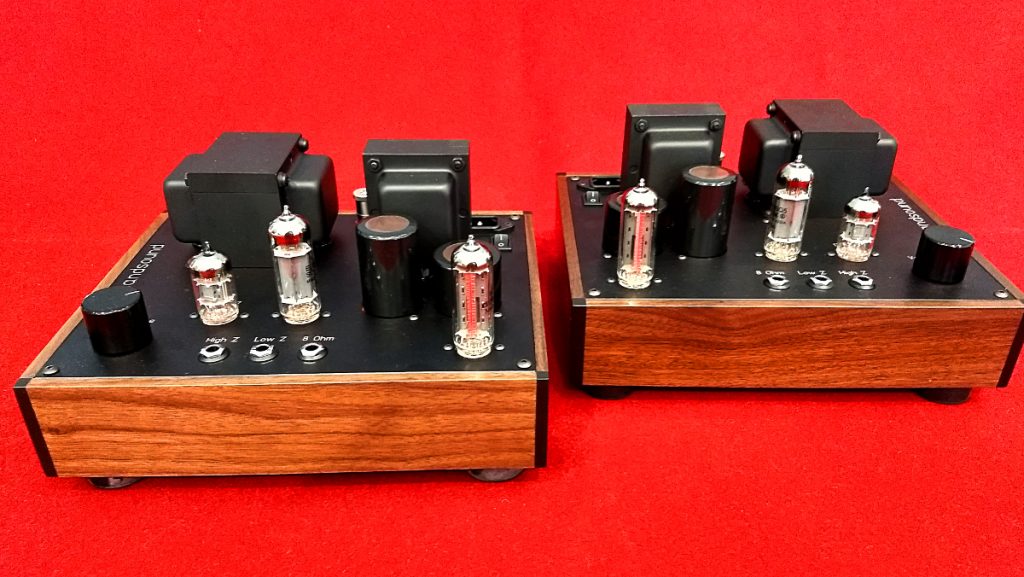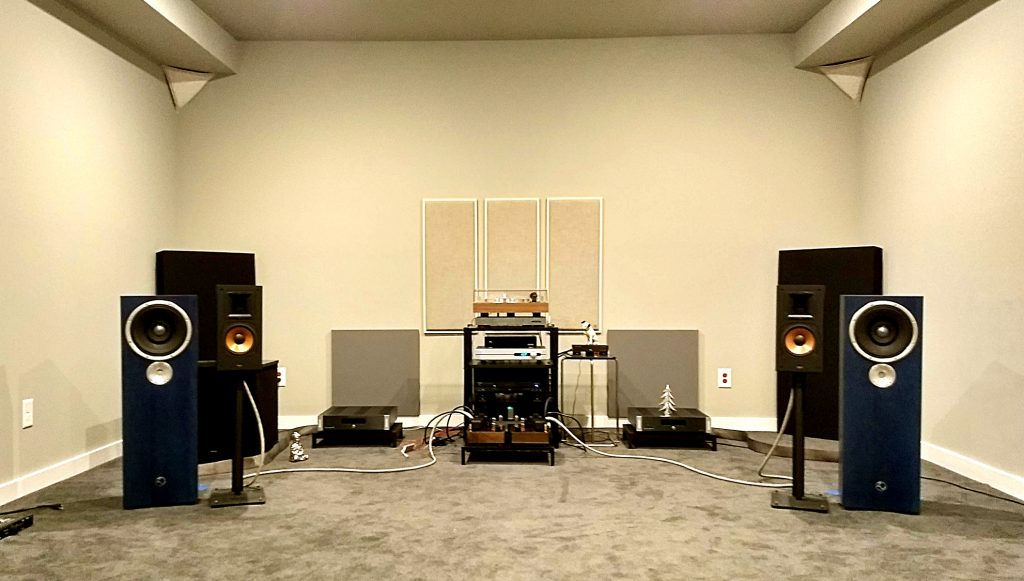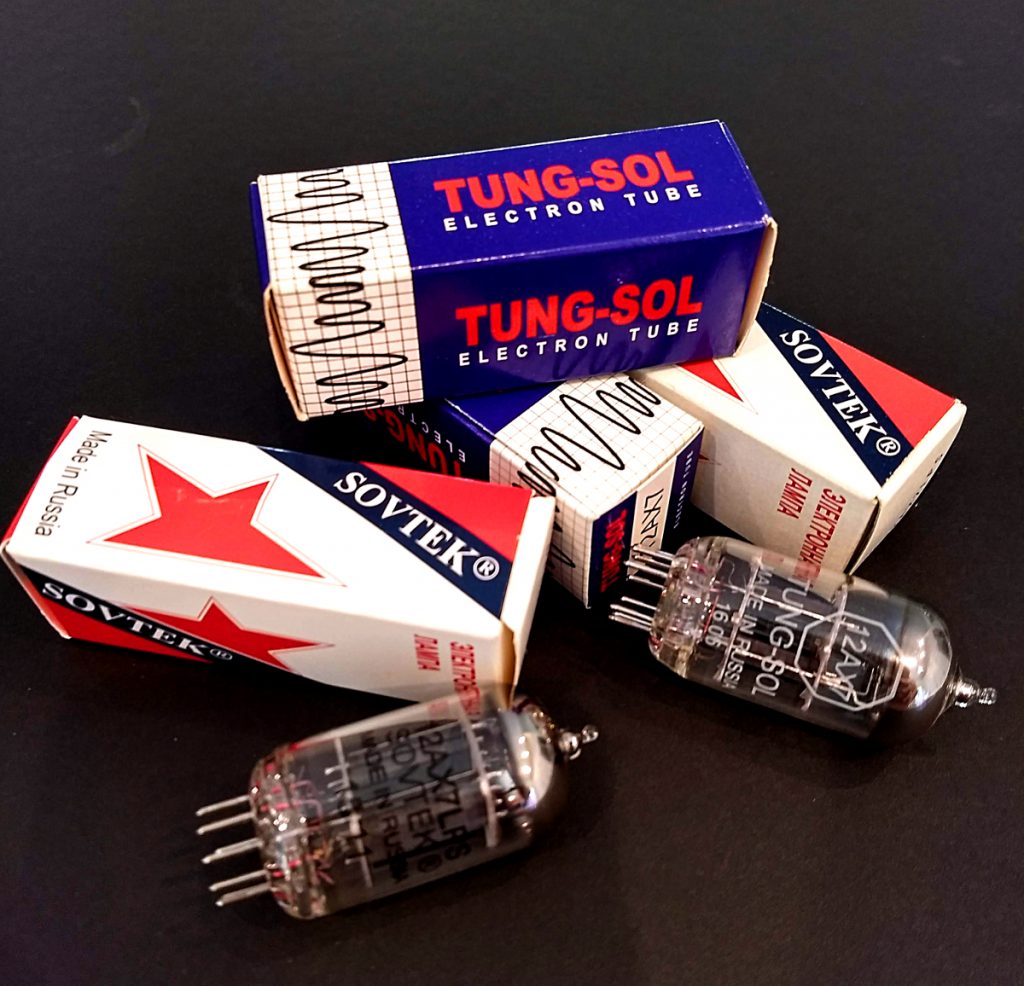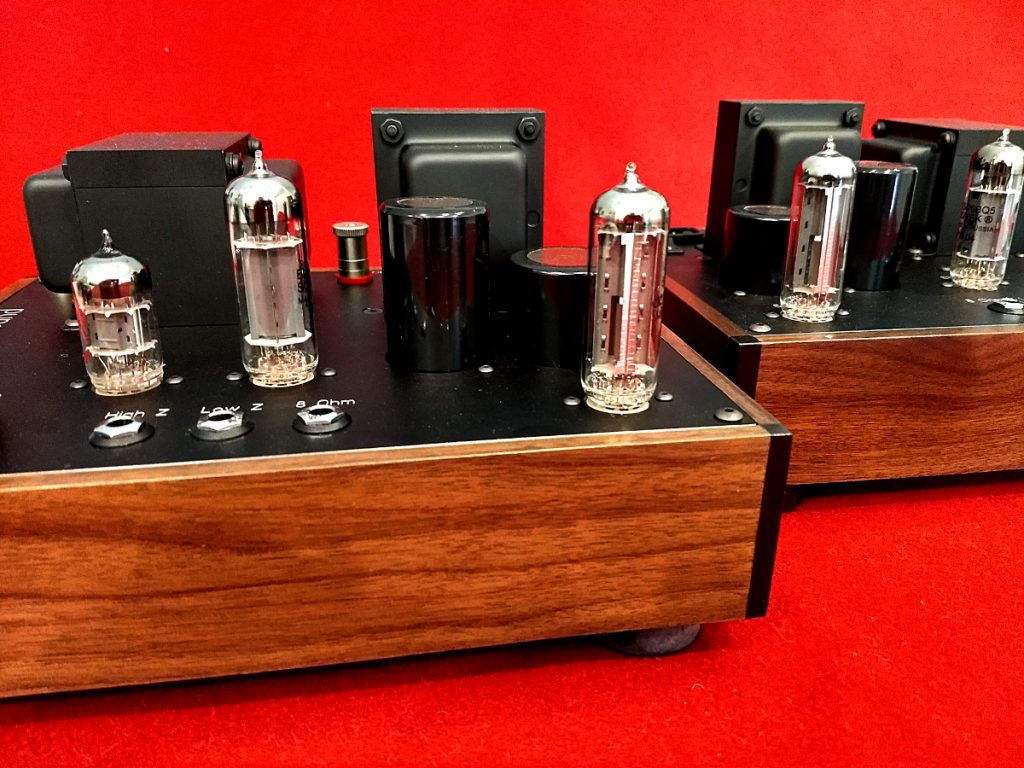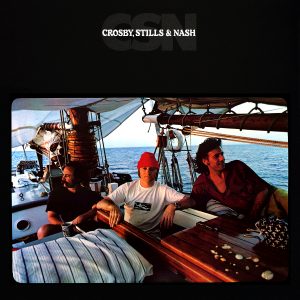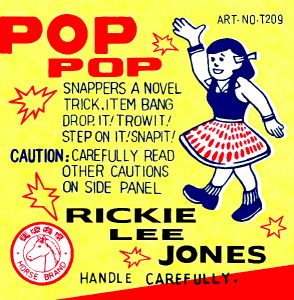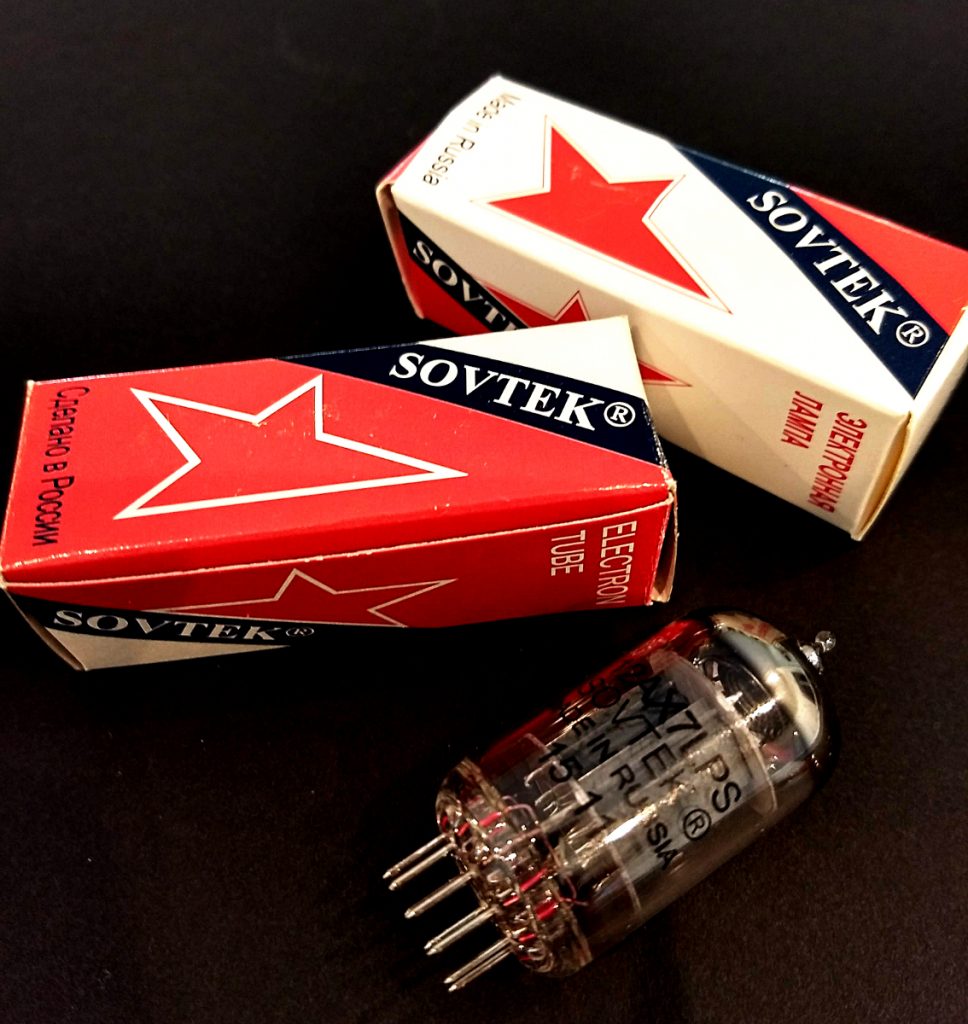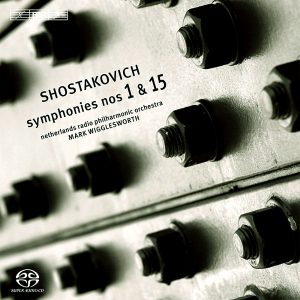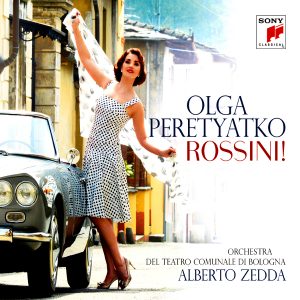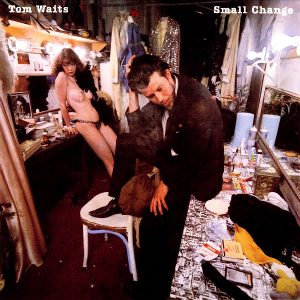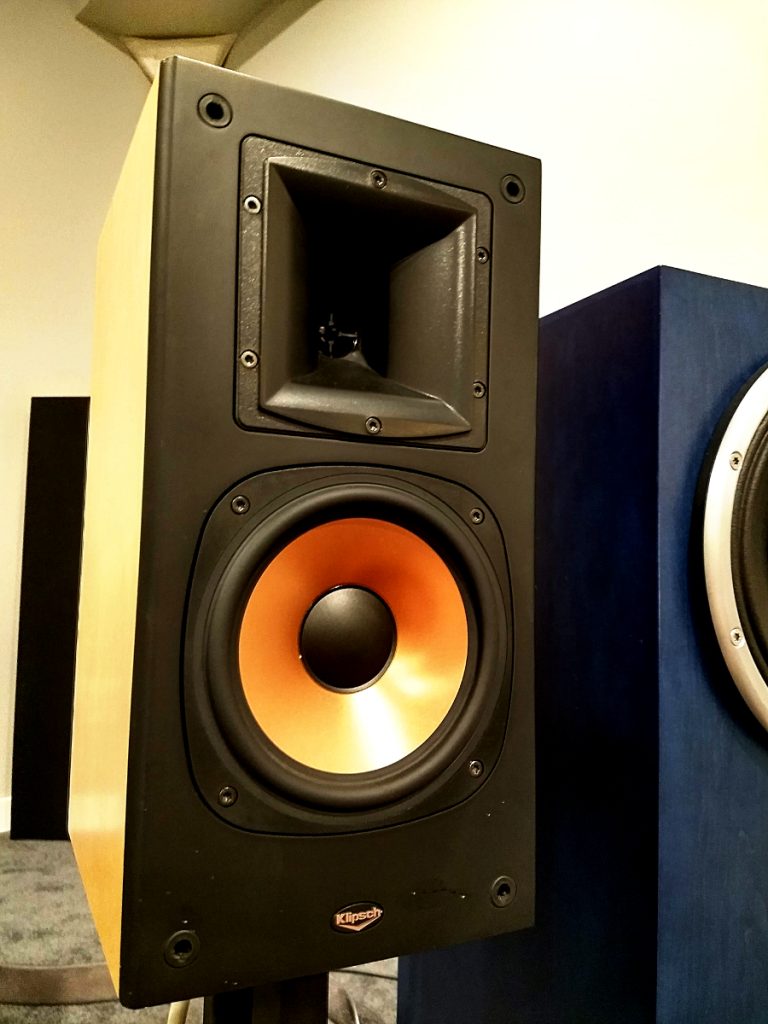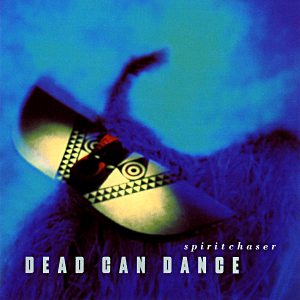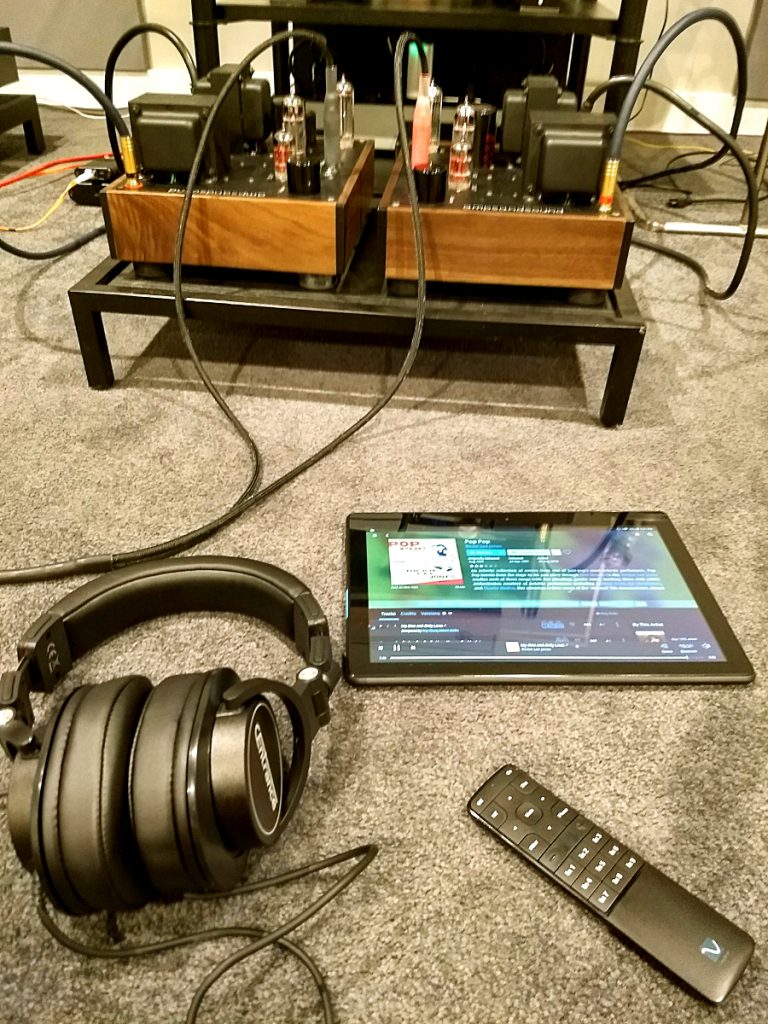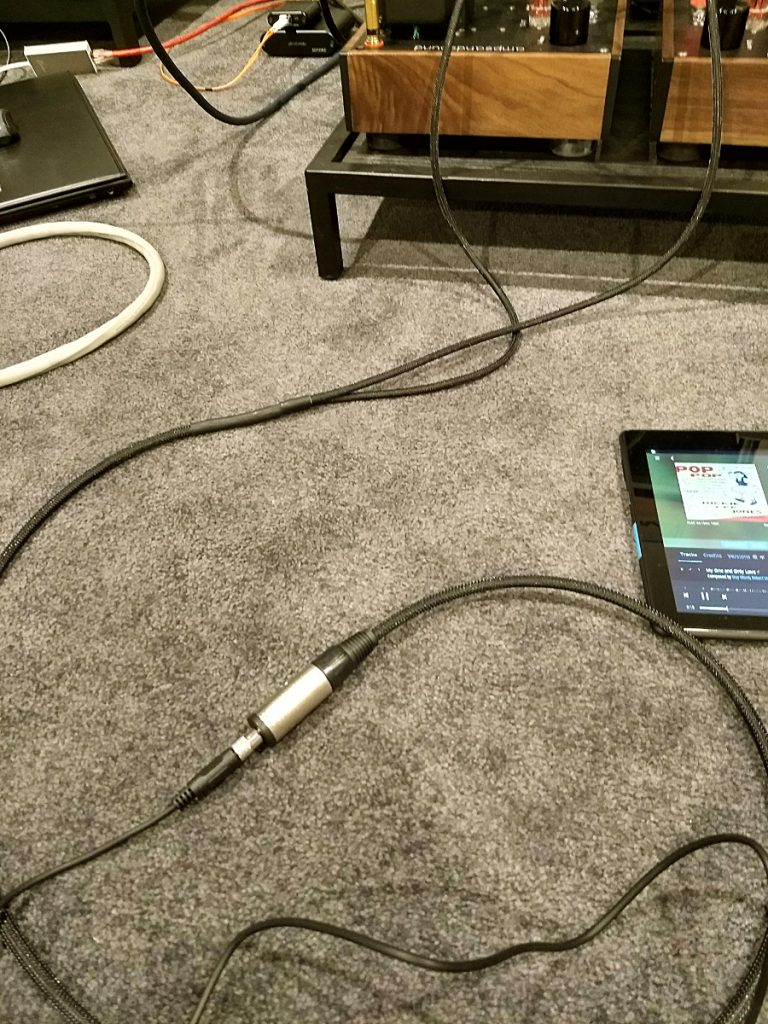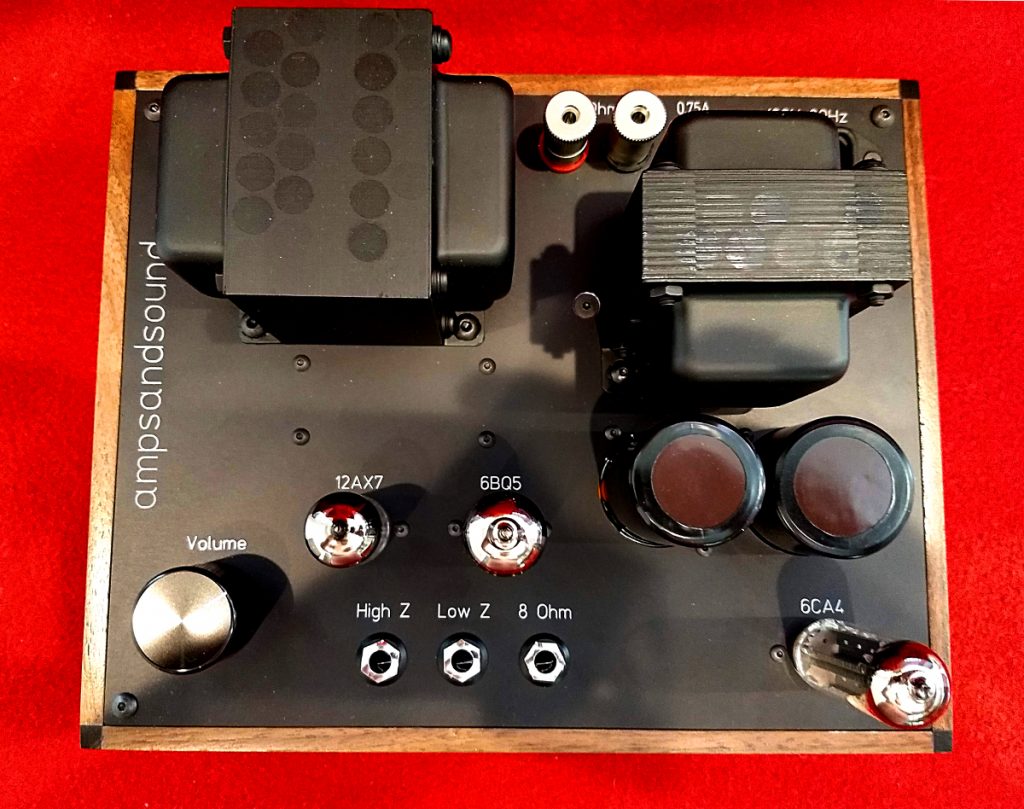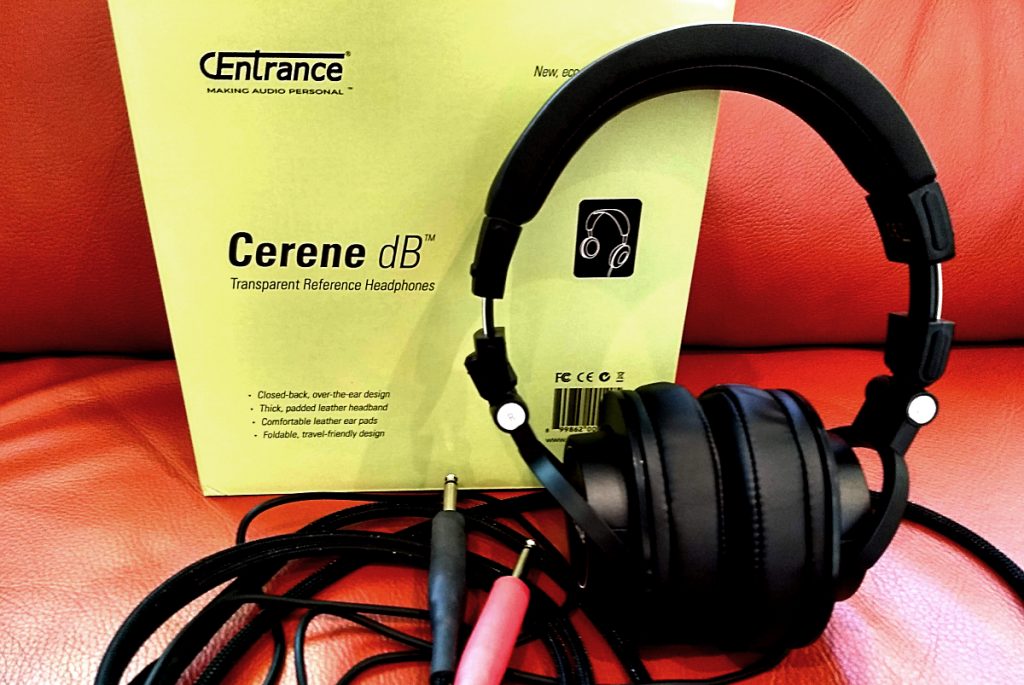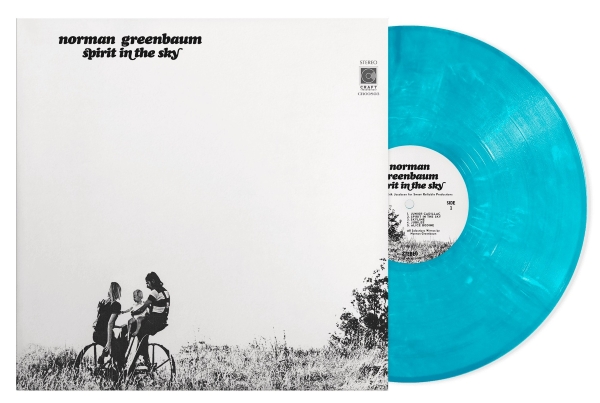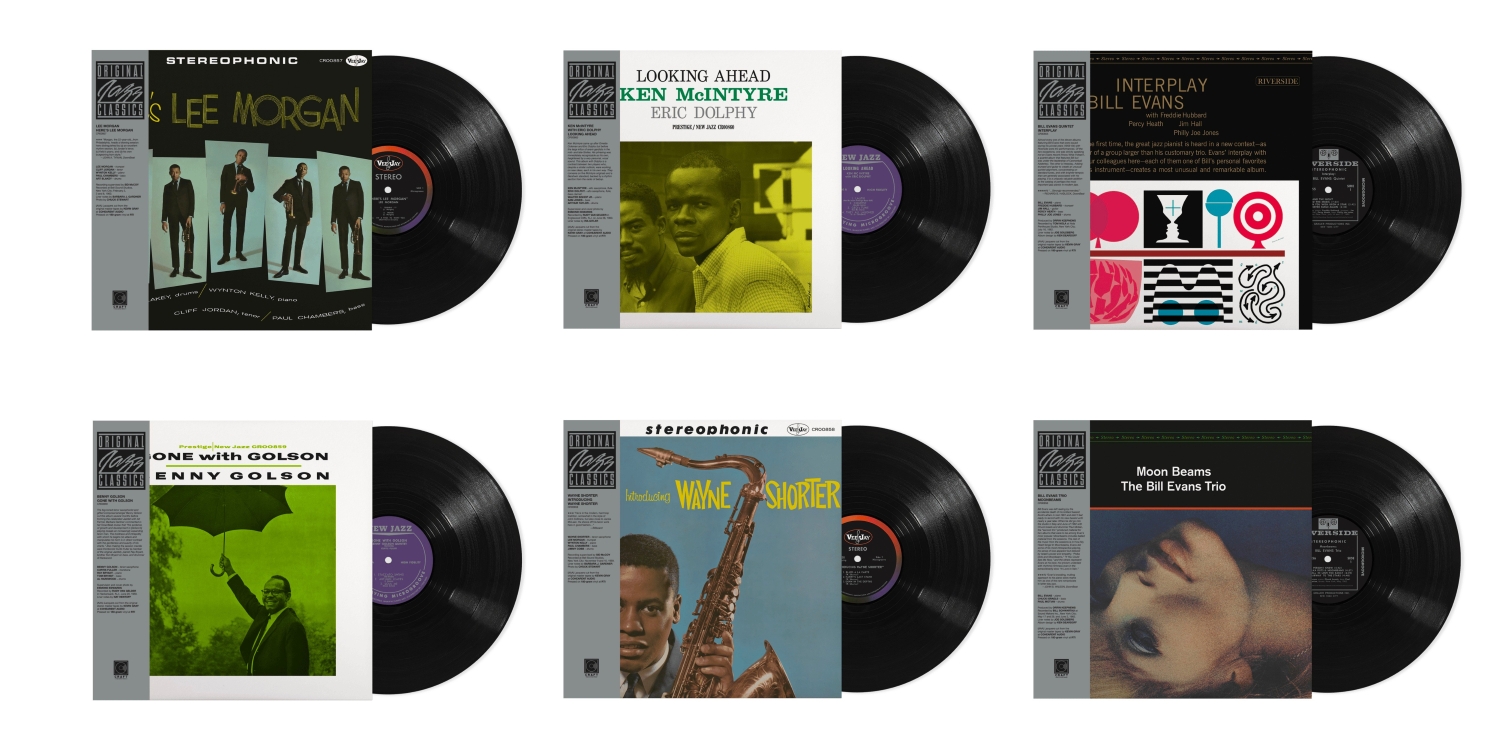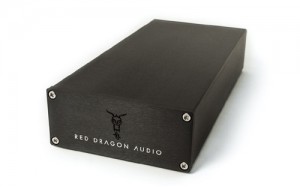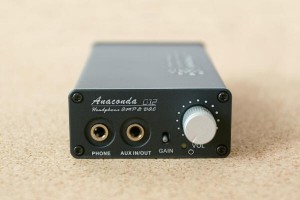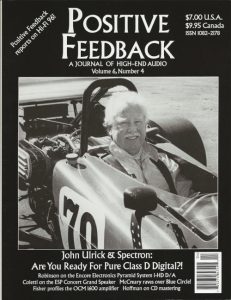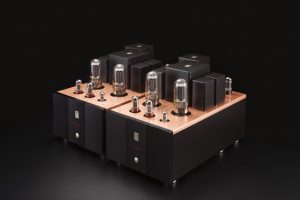I've owned a pair of Zu Audio Omens—the Dirty Weekend (DW) variety—for over five years now. Zu builds high-efficiency loudspeakers that employ 10-inch full range drivers and compression tweeters, with many of their models approaching 97dB per 1 watt input. During operation, the 10-inch drivers, which are custom-manufactured for Zu by Eminence in Kentucky, run completely full range with no crossover network. The compression supertweeters—also manufactured by Eminence, and essentially presented by Zu as horns—also run full range and utilize a single capacitor to create the high pass filter. Variants of this configuration are consistent across much of Zu's loudspeaker line. Zu's offerings are always very musical and dynamic, and play well with a variety of amplification topologies.
Zu offers an ever-changing upgrade path to owners of most of their models, and the original concept of the Omen Dirty Weekend was to use drivers that have been re-purposed from previous Zu designs. Zu owners are regularly offered the opportunity to trade in their current drivers and purchase upgrade packages that include new, Nanotech 10-inch full range drivers and improved compression tweeters. Which leaves Zu with a boatload of the previous generation of standard full range drivers. My pair of DW's came with the Zu 260FRD G2-08 ten-inch drivers, which had previously resided in a pair of Zu Druids—at the time, Zu's $5000 flagship loudspeaker. Earlier this year, I upgraded the compression tweeters to the Eminence ASD-1001's, which I wired with the Clarity MR caps. The end result being, I now own a $1000 pair of loudspeakers that play in a league that's way above their humble origins. It's Zu's way of allowing entry level users to taste their exotic and intoxicating sound for mere pennies on the dollar.
I've been powering the Omen DW's with a pair of Emotiva XPA-1L Class A Monoblocks; they're a hybrid design that output 35 watts of pure Class A sound, or can be switched to 250 watts of Class AB when needed. The 35 watts of Class A have proved to be more than enough for the Omen DW, and I've been very happy with the combination for the last four years. Despite being made in China, for $1400 for the pair, they were a runaway bargain and offer superbly musical sound. And they pair very well with my Omen DW's. The Zu full range drivers produce a remarkably smooth and liquid midrange, as well as offering surprisingly deep bass, which is flat to below 35Hz. I actually run two subs full range all the time, and during some recent equipment evaluation, I turned them off while reconnecting my equipment stack. Several weeks passed before I realized that the subs weren't even switched on! And the new tweeters and Clarity caps are the bomb, adding a level of frequency extension and air that takes the DW's to the next level.
That warm afterglow…
Despite being deeply entrenched in the solid state world, I have always dreamed of the allure of glowing tubes. My wife and I just built a new mid-century modern home, with as many authentic touches as possible; the warm glow of tubes would be right at home here. I have very little practical experience with tube equipment; in the mid-nineties I had the opportunity to take home an Audio Research entry-level stereo tube amp loaner, which output about 25-watts per channel. I had hoped it might work well with my then pair of Magneplanars (five pairs over 30 years, with a new pair on the way!)—no dice, as the power hungry Maggies needed waaaay more juice to output even a mouse squeak. Needless to say, the Audio Research amp was returned to HiFi Buys the very same day, and I learned from that experience that power-hungry, low-efficiency panel speakers don't mate well with low-powered tube amplification. Since then, my only other tube experience has been with a Rolls Bellari tube phono preamp, which I used regularly for several years. I experimented a bit with tube rolling, and over a couple of years ended up buying a couple of sets of 12AX7 from the likes of JJ, TungSol, and Sovtek. Which have basically sat in their boxes, untouched, for some time now.
I'm relatively active on Facebook and Instagram, typically posting photos of equipment I've just gotten in for review on Positive Feedback; earlier this summer, I accepted an Instagram follow request from ampsandsound. At the time, I didn't know whether it was just another like-minded audio individual, or possibly a manufacturer. I noticed that there were fairly frequent pics posted of some really nice looking tube equipment, but, having had an insanely busy summer, never really made any kind of mental connection. Until I got an email from Dave Clark, informing everyone at PF of a review opportunity with ampsandsound, a manufacturer of high-end tube amplifiers. So....ampsandsound....well OK!
There were links to the products offered, which included a couple of pairs of single ended triode mono amps, as well as a couple of pairs of stereo tube amps. Wow—single ended triodes—would that ever be a dream come true, especially with the Zu Omens! I'd read comments on Zu's website and elsewhere, regarding Zu loudspeakers that were paired with tubes; everyone simply raved about the resultant sound. I fired off an affirmative response to Dave Clark's email; too low, too slow—the mono amps are already spoken for, but one of the stereo amps was still available. Great, that's the next best thing. Justin Weber of ampsandsound also sent me an email; why don't we chat for a few minutes? It was around noon EST, and I was at my day job in a bit of a crunch; I responded that I'd call him in a couple of hours.
Unfortunately, my very busy day got away from me; at 8 pm EST, my phone rang, and it was Justin—oh crap, I forgot to make the call! We talked about my plans for the review, and Justin was pumped that my speakers were the Zu Omens—he also has a pair, and says that they're a perfect match for his amps. So great; which amp did I want? Uh....I was probably locked into the Mogwai stereo amp, because of my failure to reach out to Dave Clark in a timely fashion. "No, man," Justin said, "you're the first in, so you get first choice!" Huh? I didn't want to step on anyone's toes or anything; Justin assured me that it was not a problem—which amp did I really want? How about the Leeloo monos; even with an output of only 3-watts into 8 ohms, Justin was confident that they'd drive the Omens to surprisingly satisfying levels. Zow—it was really happening!
But not without a little more drama—FedEx totally screwed up the special delivery instructions, causing me to damn well nearly have a heart attack during the process—fortunately, all ended well, with the amps delivered ahead of schedule. My wife called to tell me there were two black suitcases sitting by the garage door—were those the packages I was expecting? Suitcases? They were indeed, and upon my arrival, the black suitcases were actually two Peloton cases, and the amps were packed more securely and professionally than anything I've ever received from any manufacturer, ever. After unpacking and inspection, OMG—the amps were simply stunning to behold, and more jewel-like in their appearance than any online photos could possibly have prepared me for.
The Leeloo Monos
The construction and casework of the Leeloo Monos is remarkably well done; the fit and finish is beautifully impressive. They're based on the original Leeloo stereo amp from a few years ago that employed essentially the same tube complement, except with everything on a single chassis. Breaking them out into separate chassis would allow for greatly improved power supply management. And with the work Justin had recently done with his Suolo Monos, an excellent platform now existed for him to create a new statement offering with the Leeloo Monos. They are single ended triode monoblocks, with small amounts of feedback added to present a more neutral and modern-sounding overall presentation. With greater frequency extension, super fast transients, and a deeply black background. SET magic, but more muscular with a tad more wattage. Justin employs a lot of cool old school tube amp design features that really help make anything offered by ampsandsound so very special. Like using turret boards instead of PCBs inside for all the hand-wired internal connections, an homage to great early designs by McIntosh and HK. The Leeloos are hand-wired and hand-made in Southern California, and assembled from all US-sourced parts.
I had a few questions for Justin right out of the gate; I noticed that there wasn't a bias knob on the chassis, and Justin informed me that the amps were auto-biasing, with no bias adjustment necessary. Awesome; now how do I need to adjust the volume control for use with my preamp, the PS Audio Stellar Gain Cell DAC/Pre? Rotate the volume fully on each chassis and control the volume with my preamp. I also asked about how problematic it might be in using one of my subs in my setup with the Leeloos. The sub in question is a REL, and uses a Speakon connector cable to derive the signal by connecting directly to each amp's speaker terminals. Shouldn't be a problem, and please let him know about my experience with the sub. Here we go!
I disconnected the Emotiva amps, allowed them to cool, then temporarily placed each Leeloo on the same amp stand as each of the two XPA-1L's, which were already in the correct position for connection to the Zu Omen DW's. I had another review project with a high-end digital streamer from Sonore currently in process, so it would be relatively easy to disconnect and reconnect between the two amps as needed to maintain continuity between the two review projects. My Emotivas are connected by a balanced cable, but the Leeloos only offer single-ended inputs, so I dug out some appropriate AudioQuest Topaz single-ended cables to make the necessary connections. I inserted the complement of supplied tubes from ampsandsound, which included (in each chassis) an ECC83 MG (12AX7) input tube from JJ Electronic, a 6CA4 rectifier tube from Electro Harmonix, and a 6BQ5 (EL84) output tube from Sovtek. Are you ready to rock?
I'm a firm believer in allowing electronic circuits time to sufficiently warm up (especially tubes!), so after about a half hour or so, I put on one of my favorite LPs, Crosby, Stills, and Nash's CSN. This release followed Deja Vu by a few years, and was the last album that highlighted the voices of all three members without augmenting them with background singers. Holy shinola, single ended triode tubes powering my Zu Omens, and what an incredibly magical moment! The side one opening track "Shadow Captain" really shows off the glorious harmonies of these three amazing singers to incredible effect, and I've never heard this track replayed with a more accurate and musically satisfying recreation of the recording. Ever. There was more air, more transparency, and a much more well-defined presentation of the recorded acoustic. I listened to the entire album side, then walked upstairs from the listening room; my wife, Beth said, "so, how was it?" My response: "we may need to win the lottery before this review period is over!" The part that really floored me is how the music played effortlessly at what I considered at-or-near reference levels—with a three watt amplifier! And this is in my new room, which has a volume of about 3500 cubic feet: that alone impresses the hell out of me.
I also checked out a few other CDs and assorted digital files; the results were all uniformly excellent. I recently acquired a new Yamaha BD-A1060 universal disc player; it's maybe the best CD and SACD sound I've ever experienced, and proved to be an excellent source unit for the Leeloos. "My One and Only Love," the lead track from Rickie Lee Jones' excellent Pop Pop CD just blew me away. This covers album was a true departure for Rickie Lee, with jazz inspired renditions of pop and Tin Pan Alley fare; through the Leeloos, her quirky / sweet voice on this song sounded more liquid and inviting than ever before. And when Charlie Haden's acoustic bass enters from the left—what an absolute wow moment, with bass that was more tuneful, more well controlled, and much deeper than I ever remembered hearing it. And, of course, at this point, I remembered that I (once again) hadn't turned on the REL sub during the Leeloo connection process—all this great bass was coming strictly from the Omen DW. How incredibly revealing, and even more so when I turned on that darned sub! After a few hours of complete bliss, I disconnected the Leeloos, and reconnected the XPA-1L to continue with the Sonore review the following morning.
That's when all hell broke loose; I couldn't get the right channel XPA-1L to power up. Nothing but clicking and flashing of the power LED; same thing happened to the left channel amp two years ago—something gone amiss in the power supply switch chain. Dammit! Well, nothing to do but box it up and return it to Emotiva for service; looks like the Leeloos are going to be carrying the load for the next several weeks. I'll just have to recalibrate my mental reference for any review projects currently happening in my system.
Up until this point, I'd mainly been listening to music that, while sometimes challenging to reproduce, was well within the comfort zone of the Leeloos. When I started pulling out full scale classical orchestral pieces, however, that's when I started to notice the first signs of classic tube clipping—the soft, buzzed-out truncation of the musical waveform with the very tips of demanding musical peaks. This was also evident with higher-energy rock and prog, as well as with demanding vocal material, like Russian singer Olga Peretyatko's divinely piercing soprano in Rossini's Il Barbiere di Siviglia. I decided to venture out into the wild, and try rolling the input tubes a bit.
Let's roll!
The Leeloos came supplied with the JJ ECC83 MG, a medium gain preamp tube which exactly matched the pair I had on hand. So my tube rolling would be limited to the other tube pairs I also had on hand, which included new production TungSol 12AX7 and Sovtek 12AX7 LPS. In my previous limited experience with the TungSols, I recalled really liking the sound, which I felt was a bit more dynamic than the JJ; they're a tad higher output, and provide a particularly alluring tone to fuzzed-out guitar solos from the likes of Sabbath's Tony Iommi. But the tube I ultimately fell in love with was the Sovtek LPS, which provided a much more balanced and neutral presentation, and offered some much needed gain to my system from years ago. I found a really useful tube comparison chart on the web; the JJ's came in at 6 on the gain scale, with the TungSols at 7, and the Sovteks at 9. Maybe a little extra gain would prove beneficial in terms of helping the Leeloos manage slightly more demanding music from a variety of sources.
Yes, that was indeed the ticket! Now I know from reading and re-reading all the information on ampsandsound's website that the Leeloos are primarily aimed at high-end headphone users, with the added bonus of being able to drive high-efficiency loudspeakers to satisfying levels, if so desired. But in my particular system, with the Sovtek input tubes in place, I honestly believe I could live with these amps and never look back or want for more—they're that good. Whereas with the supplied JJ's in place, I might occasionally push the volume setting on my PS Audio preamp to the high nineties (it peaks at a setting of 100) prior to hitting clipping, I now was very comfortably enjoying a greater variety of demanding music at around 70 to 80 points on the scale. I know this doesn't really translate into a meaningful decibel reading; with the trusty Rat Shack dB meter, that translates into somewhere in the range of 80 to 85dB or so, which is very typical for me, but it was not at all unusual to observe instantaneous peaks of 96dB or higher with zero clipping.
Orchestral music was now presented with gusto and bravado; a recently-downloaded BIS recording of the Shostakovich Symphony No. 1 is a perfect case in point. Featuring the Netherlands Radio Symphony Orchestra conducted by Mark Wigglesworth, this brashly idiomatic performance is near-definitive, and his is decidedly the current Shostakovich cycle you'll want in your library. An incredibly dynamic reading, this demonstration-quality recording showcases the synergy of the Leeloos and Zu Omens at their very best. The second movement Allegro's rapid-fire, heavily percussive crescendos are presented with staggering intensity and plenty of available headroom. Achieving satisfying SPLs here is most definitely not an issue. This is a truly magnificent recording, and it's rendered here via the Sonore Signature Rendu SE with the kind of scintillating sound any audiophile would absolutely dream of. Remember Olga Peretyatko? She's now uninhibitedly free to blast out her multi-octave coloratura stylings with complete and utter panache. Her Rossini album from a couple of years ago is a remarkable testament to her talent; she's definitely one of the rising stars currently in the world of opera.
Listening at such high volume levels with these perfectionist amplifiers really brought home to me how very quiet the Leeloos (and my PS Audio gear) really are. My solid state amps typically play at a volume setting of about 40 to 50 for reference sound levels. I have always worried that if I pushed them even harder, any accompanying noise spectrum in the background might be made much more obvious. With the Leeloos, even at approaching 100 on the PS Audio preamp volume scale, there's only the very gentle hissing of the tubes, and nothing else. It's astonishing, and also very revealing of the level of quality that Justin engineers into these amazing amps.
I now spent entire days playing either LPs, CDs, or digital files from my music server through the Rendu SE. Tom Waits' entire catalog was recently remastered on CD and LP, with lots of involvement from Waits and his wife Kathleen Brennan. The new discs, especially the CDs, now offer glorious sonics—especially when compared to the relatively lifeless Warner transfers. I grabbed both LP and CD of one of my perennial favorites, Small Change; I know this album inside and out, and it's never sounded better than on these new remasterings. And through the Leeloos, Tom Waits is right there in your room—the soundstage is literally drenched in whiskey and cigarette smoke. Waits spins expertly crafted tales of low-lifes, hooligans, and lost loves; on the superb title track, you hear a match-strike light his cigarette to the backdrop of Lew Tabackin's deeply authentic sax intro. Waits then chronicles the demise of a small-time hood who got "rained on with his own .38"; the overall effect via the Leeloos is rendered with stunningly palpable realism. I have to give the overall nod to the LP's warmth and detail, but the CD and its uncompressed FLAC rip were also both astonishingly good.
The legendary sound of single-ended triodes with horns
Just for giggles, I decided to hook up the Leeloos to one of my best thrift store finds, a fifteen-year-old pair of Klipsch RB3 Reference Series bookshelf speakers I picked up at a Goodwill for $10 for the pair ($650 MSRP new!). The RB3 have a four-inch Tractrix horn that utilizes a titanium compression driver, along with a 6.5 inch cerametallic mid woofer. Bass is flat to 58Hz, and they're pretty efficient at 95dB per 1 watt input. And they can handle peak inputs of up to 400 watts. In my normal system configuration, they get used in the surround channels of my 5.1 SACD system; it's temporarily on the back burner, as my new SACD player only outputs 5.1 sound via HDMI. I'll eventually find the right box to convert the HDMI output to 5.1 analog; since most of my hi-res listening is 2-channel anyway, so no big deal. But in a surround setting, the Klipsch's mate synergistically really well with the Zu Omens, especially with both of them being compression-style loudspeakers.
Horns tend to get lots of negative press because the top end can sometimes be presented as a little hard, or maybe even etched. Horns require very careful amplifier matching; so using mid-fi garbage with horns would definitely tend to result in less than stellar sound. That's no problem with the Leeloos; surprisingly, with the Klipsch RB3's specified at 8 ohms, they played a bit louder with less input than the Zu Omens (12 ohms) did! And prior to this point, I'd removed my 12AX7 LPS Sovtek tubes from the Leeloos and replaced them with the JJ's supplied by Justin and ampsandsound. The Leeloos cast an extraordinarily huge soundstage with the RB3, while also lending plenty of warmth and liquidity to the critical midrange area. Vocals were perfectly placed, rendered with a full-bodied heft that totally belied the smallish cabinets of the RB3. I did employ a sub, but all connections were full-range, and the sub blended perfectly with the RB3 to give them an enormous sound that was shockingly good. I totally mean this: paired with the Leeloos, I could easily live with the diminutive RB3 as my main speakers with very few regrets—and I only paid ten bucks for them. Never at any point did the sound seem stressed or bloated; it was about as perfect as possible, and a sheer joy to listen to.
The album that really impressed me with this setup was the Dead Can Dance disc Spiritchaser, where the bass and drums were about as subterraneanly thunderous as possible. Yeah, a lot of that's the sub, but the Leeloos so perfectly controlled the excursion of the RB3's mid bass driver that it was always perfectly in sync, and never felt overmatched by the music. And the absolute liquidity of Lisa Gerrardo's otherworldly voice was simply stunning. A truly great album, you should definitely check it out if its not already in your collection.
Headphones
I've owned a number of decent headphones over the course of my life as an audiophile, and I always generally keep a couple of pairs on hand. Mostly for listening when my wife, Beth, has control of the television and has landed on HGTV or some insanely sick horror flick that I couldn't care less about. Or when I'm writing music reviews, where I've decided to make an attempt at engaging by at least being in the same room as Beth, rather than segregating myself down to the listening room. I'm no spring chicken, and my hearing is no longer perfect; I've got a touch of tinnitus that thankfully comes and goes—mostly, it stays gone. And I do prefer the sound of loudspeakers in an environment that, for me at least, tends to ameliorate any inconsistencies in my hearing. My goal for this review was to evaluate the Leeloos as monoblock amplifiers driving high-efficiency loudspeakers.
Until a couple of weeks ago, when an email from Michael Goodman at Centrance got my attention. Centrance is unusual among high-end manufacturers, in that the majority of their business is aimed at Pro-Audio users, typically for use in recording studios or by professional musicians. But they also build products that are definitely aimed at audiophiles; they've made the cover of Stereophile a couple of times over the last five years or so with DACs and preamps that are just as comfortable in the home as in a professional environment. Centrance was introducing a new pro headphone, the Cerene dB, which their press release touted as being "a transparent reference for professionals and audiophiles." They appeared to be well-built, with full-sized, over-the-ear leather earpads, and are also foldable and easily transportable. Hey, I've got the perfect set of absolutely world class headphone amps on hand—why not take a listen? I let Michael know I was definitely in, and I also reached out to Justin regarding headphone listening with the Leeloos. A special connection cable was required—he'd get it out to me asap.
The Cerene dB arrived over the weekend (full review forthcoming); I was outside, blowing leaves (that time of year again!) off my deck on Sunday morning, and thought I heard someone calling my name, repeatedly. I turned off the blower and suddenly realized that someone was in the yard below me with a package. "Tom Gibbs! I have a package for you!" Wow—that was quick! The Cerene dB are exceptionally well-made, with the fit and finish of a perfectionist pair of professional cans that look and feel way more expensive than their $179 MSRP would suggest. I listened for a couple of days using the new AudioQuest DragonFly Cobalt USB DAC (full review forthcoming) that had also just shown up, mostly listening to Roon via my laptop to get an idea of how they sounded. I was immediately struck by the extreme comfort and lack of fatigue with extended listening sessions with the Cerene dB. Via this combo, they sounded really good, with a very neutral presentation that offered much less of that "music inside your head" effect that so many phones seem to overemphasize. Now for the real test!
A relatively new product that only just started shipping to the general public, the Cerene dB arrived with no posted specifications. Online, I was able to determine that their impedance was rated at 40 ohms, so I used the Low-Z headphone taps (rated at 32 ohms) for all my listening tests with the Leeloos. The Y-connection cable that came from Justin utilizes two standard headphone jacks (one for each channel) on one end, connected by about five feet of very high-quality looking cable to a single standard input connector at the other end. Plenty of length for you to kick back in your favorite chair for some comfortable listening. Would owning a pair of $5,500 headphone amps make a difference in my listening enjoyment?
I can now answer that with an unequivocal yes! When I wrote the above comments about my hearing, that was mostly based on my personal experience and self-assessment. But also on my recent listening with a new, but very high quality pair of headphones (the Cerene dB), with a highly regarded portable DAC/headphone amp (the AudioQuest DragonFly Cobalt). I have years of experience with the AudioQuest DragonFly family of products, and they're excellent performers—especially at their relatively meager (sub-$300) price point. It only took five minutes with the Leeloos and the Cerene dB for me to realize that my ears are in much better shape than I might give them credit for! The Leeloos lifted these relatively inexpensive headphones to an impressive level of performance that has already greatly elevated my baseline estimation of their value. As well as giving me pause to want to give a much more thorough evaluation to the new DragonFly Cobalt. Which—while not exactly apples-to-apples when compared to the Leeloos—seems, well, pretty pedestrian sounding in comparison.
Through the Leeloos, the sound took on an effortlessness and clarity that simply shocked me with its goodness. I generally have several headphone amps on hand—none of them anywhere nearly in the same league as the Leeloos—but I just wasn't prepared for the quantum leap in performance that the Leeloos brought to the table. In my relatively meager frame of reference, the $179 Cerene dB's are superbly performing headphones. But I'm certain that anyone considering spending $5,500 for a pair of single ended triode headphone amps will most likely be using them with a pair of cost-no-object cans—duh! My truth, though, is with the Leeloos, the sound quality of the Cerene dB was undeniably the finest headphone sound I've ever experienced. I listened for days to a wide variety of music from every corner of the audio spectrum; everything I listened to was delivered with power, finesse, liquidity, and truly palpable realism. And extremely non-fatiguing. I likened it to when I listened to music mostly via my Audio Technica ATH-7 headphones in my youth; the music was still fresh and vital, and the powerful presentation of the sound drew me even more deeply into it. The Leeloos gave me that same experience with the Cerene dB; I almost felt like I was eighteen again!
Conclusion
When my US-made, 250-wpc Acurus amplifier fell victim to a lightning strike seven years ago, I took a serious chance and went over to the dark side with a Chinese-made, 250-wpc Emotiva XPA-2. Essentially because it was the best amp I could afford, and my Maggies needed lotsa watts. My happiness with that amp led me to take an even bigger chance on the pair of 35-watt XPA-1L's, which I hoped would pair well with the new Zu Omens (they did!). For me, even thinking about dropping down to 3 watts per channel with the Leeloos required a tremendous leap of faith! Totally no worries; the ampsandsound Leeloos are perfectionist-built amplifiers with ample power to drive highly efficient speakers to at-or-near reference levels—with the Zu loudspeakers, they're a match made in heaven. And they employ time-honored construction practices from the golden age of tube glory; if you have the financial means, you won't be disappointed in any aspect of their performance. And for high-end headphone users seeking the grail, these amps could very well satisfy your thirst for that very elusive cup. Very highly recommended!
Leeloo Single Ended Triode Mono Tube Amplifiers
Retail: $5500/pair
ampsandsound
All images courtesy of the author




